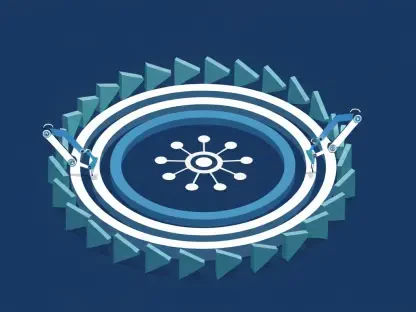For countless amputees, the loss of a limb marks the beginning of a hidden battle—one not just against mobility challenges, but against persistent hip and back pain that creeps in as the body compensates for an unnatural gait. What if technology could rewrite this story, turning a prosthetic from a mere replacement into a seamless extension of the human body? A groundbreaking advancement in robotic prosthetics is emerging, promising to alleviate these secondary aches and transform lives with every step.
The significance of this innovation cannot be overstated. With millions of amputees worldwide—many facing above-knee amputations due to injury, illness, or military service—the ripple effects of traditional prosthetics often lead to chronic discomfort and long-term health issues. This development, driven by cutting-edge research, offers a lifeline, shifting the focus from isolated joint function to holistic body movement. It’s a pivotal moment in biomedical engineering, addressing a critical gap that has long been overlooked.
A Leap Beyond Replacement: The Rising Need for Robotic Prosthetics
Traditional prosthetics, even sophisticated robotic ones, have historically prioritized mimicking the mechanics of a single joint, such as a knee bending or straightening. However, this narrow approach often ignores how the rest of the body adapts, forcing hips and lower backs to bear unnatural strain. As a result, many amputees endure pain far beyond the site of their amputation, a burden that diminishes quality of life over time.
This challenge has grown more pressing with an increasing number of amputees globally, fueled by aging populations and conflict-related injuries. The demand for solutions that address not just mobility but overall physical well-being has never been higher. Robotic prosthetics, once seen as futuristic, are now at the forefront of meeting this need, evolving into tools that could prevent secondary injuries.
Enter a new era of innovation where technology aims to harmonize with human biomechanics. This shift represents more than an upgrade—it’s a fundamental rethinking of how prosthetics integrate with the body, offering hope for a future where pain doesn’t follow loss.
Uncovering the Pain: The Broader Impact of Amputation
Amputation alters more than just the missing limb; it reshapes the entire way the body moves. When a prosthetic fails to align with natural motion, other areas compensate, often leading to overuse injuries in the hips and spine. Studies indicate that a significant percentage of above-knee amputees report chronic back pain within a few years post-amputation, a statistic that underscores the urgency of better design.
Beyond physical tolls, this discomfort can erode mental health, limiting independence and social engagement. Many amputees find themselves caught in a cycle of pain management rather than focusing on rebuilding their lives. This hidden cost of traditional prosthetics reveals a critical flaw in systems that prioritize function over holistic impact.
Addressing this issue requires looking at the body as a connected system, not a collection of isolated parts. The latest advancements in prosthetic technology are beginning to tackle these cascading effects, aiming to restore balance and reduce strain where it matters most.
Pioneering Technology: A New Algorithm for Prosthetic Harmony
At the core of this revolution lies a novel algorithm crafted by researchers at North Carolina State University and the University of North Carolina at Chapel Hill. Unlike prior systems that focused solely on the prosthetic knee, this approach employs inverse reinforcement learning to create a bilevel optimization framework. It synchronizes the prosthetic’s motion with the user’s natural hip movement, aiming to replicate pre-amputation walking patterns.
Testing with five participants, including two above-knee amputees, has yielded striking results. Data shows enhanced hip range of motion and a more fluid gait, characterized by longer, smoother steps. These outcomes suggest a significant reduction in bodily strain, directly targeting the root causes of hip and back pain that plague so many.
The potential of this technology extends even further. Researchers believe the algorithm could adapt to other movements, such as trunk motion or walking symmetry, broadening its application. This adaptability marks a bold step toward personalized prosthetics that cater to individual needs rather than a one-size-fits-all model.
Voices of Change: Researchers and Early Feedback
Insights from the research team add depth to this promising development. Lead researcher Varun Nalam highlights the health-focused mission, stating, “The aim is to prevent secondary injuries by ensuring prosthetics work in tandem with the body, not against it.” This perspective shifts the narrative from replacement to restoration, emphasizing long-term well-being.
Co-researcher Helen Huang adds a technical lens, noting, “This algorithm learns from each user, delivering a truly customized experience.” Such personalization is key, as early trial participants reported feeling more stable and balanced during movement. Objective data supports their feedback, revealing a measurable improvement in gait naturalness during testing.
These firsthand accounts and expert insights, drawn from a study published in IEEE Transactions on Robotics, lend credibility to the innovation. They paint a picture of a technology that doesn’t just function but feels intuitive, bridging the gap between human and machine in unprecedented ways.
Practical Steps: What Amputees Can Do Today
While this algorithm is not yet widely available, its progress offers immediate avenues for engagement. Amputees and their families can stay updated on clinical trials through university research networks or advocacy groups like the Amputee Coalition, which often disseminate information on emerging prosthetic technologies. Keeping abreast of such developments ensures access to cutting-edge options as they unfold.
Consulting with healthcare providers, particularly prosthetists, is another vital step. Discussing the potential of personalized robotic systems can help prepare for when these innovations reach clinical settings. Staying proactive in these conversations ensures that individual needs are considered as new solutions emerge.
Advocacy also plays a crucial role. By connecting with manufacturers and support communities, amputees can push for user-centered designs in prosthetics. Looking ahead, the integration of this algorithm into commercial products and expanded research into diverse mobility challenges signals a future where pain-free movement is within reach.
Reflecting on Progress and Looking Ahead
Reflecting on this journey, researchers and participants alike marveled at how far prosthetic technology has come, with early trials showcasing tangible relief in hip and back strain. The collaboration between human insight and robotic precision has birthed a solution that feels less like a tool and more like a natural extension of the body. Each step taken by testers echoed a larger stride toward inclusivity in mobility solutions.
As this innovation stood poised for broader impact, the next steps crystallized into clear priorities. Expanding long-term studies with clinicians to validate sustained health benefits emerged as a critical focus. Forging partnerships with industry leaders to bring this technology to market remained essential, ensuring accessibility for those who need it most.
Beyond immediate goals, a vision took shape—adapting this approach to varied locomotive challenges over the coming years, potentially from 2025 to 2027. This forward-thinking mindset aims to redefine standards in prosthetic care, offering not just hope but actionable pathways for amputees to reclaim movement without the shadow of pain.









